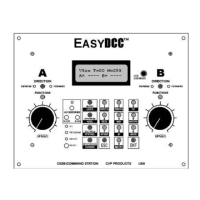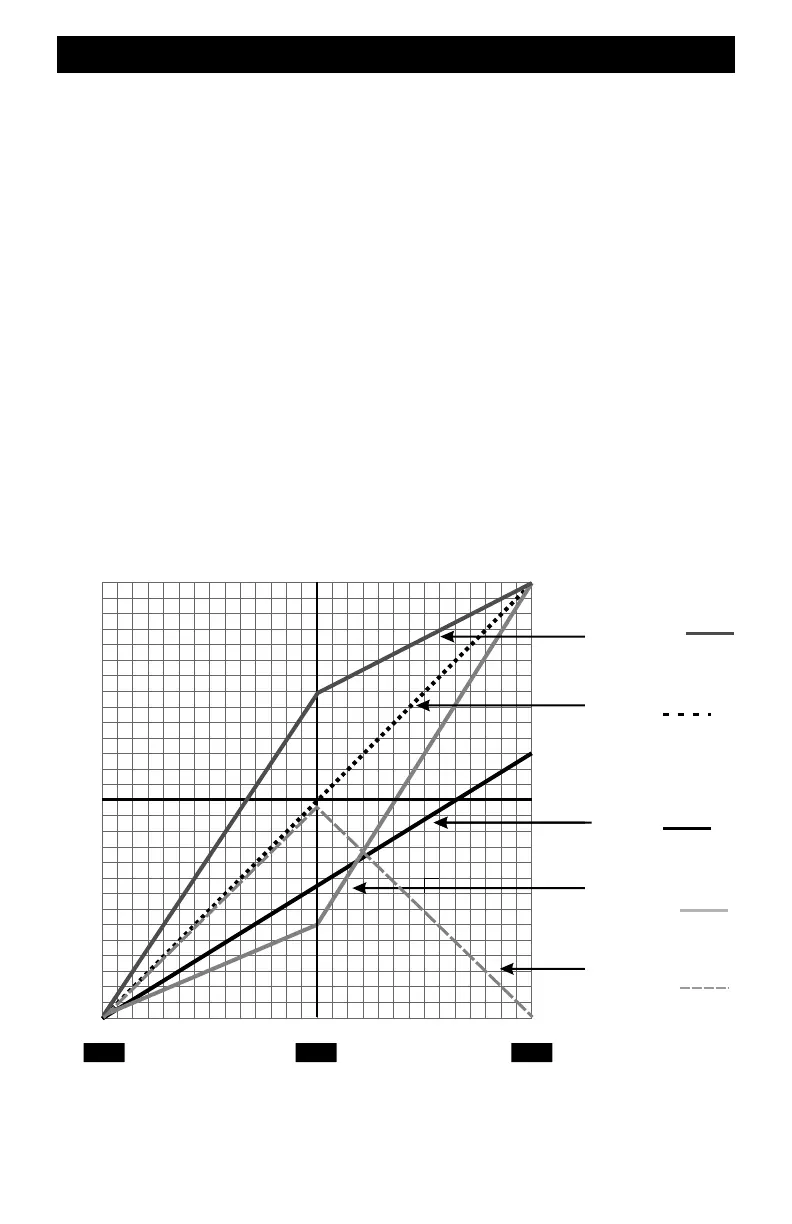104
Fine Tuning Locomotive Performance - continued
DECL [CV#4] - This determines the rate of change of speed upon a decrease in throttle speed.
Higher values result in slower rate of change - more momentum. For example with a very high
value, moving the throttle from mid-range to OFF, will result in the locomotive not stopping for
a very long time, and when it does begin to slow, its speed decrease will be extremely gradual.
SPDTABL [CV29] - This is not actually a variable but tells the decoder which internal speed
table is to be used. Almost all present decoders have a single "default" speed table plus space for a
user defined speed table (sometimes called an alternate speed table). The SPDTABL command is
used to switch between the default and the alternate speed table.
Note: several brands of decoders offer more than one alternate speed table. Some decoders have
as many as 14 built-in speed tables as well as space for the user defined alternate speed table. If
you are using this type of decoder, please review their manuals for additional information.
Alternate Speed Table [CV 67 through CV94] - These 28 CVs hold the values that translate
into different voltages applied to the motor. A value of 0 is OFF. A value of 255 means FULL
SPEED. EasyDCC provides 8 preloaded tables as well as an editor if you wish to change the
tables values.
MACRO 63 [accessed via OPS PRGM] - is used to load any of the 8 speed tables directly to the
locomotive's decoder while it is on the main track.
MACRO 93 [accessed via SVC PRGM] is used to view and change entries in any of the 8 speed
tables. Changes are permanent and are stored in the battery-backed up RAM. If the battery fails,
the 8 tables will revert back to their original default values.
Full
Speed
Speed Step
#3-Lower Top
Speed
#2-Lower
Mid-point Speed
#1-Factory
Default
#4-Higher Mid-
point speed
#5-CV5 less
than CV6
Motor Voltage
0
0
2 4
6 8 10
12 14
16 18 20
22 24
26 28
128
64
255
192
CV6CV2
CV5

